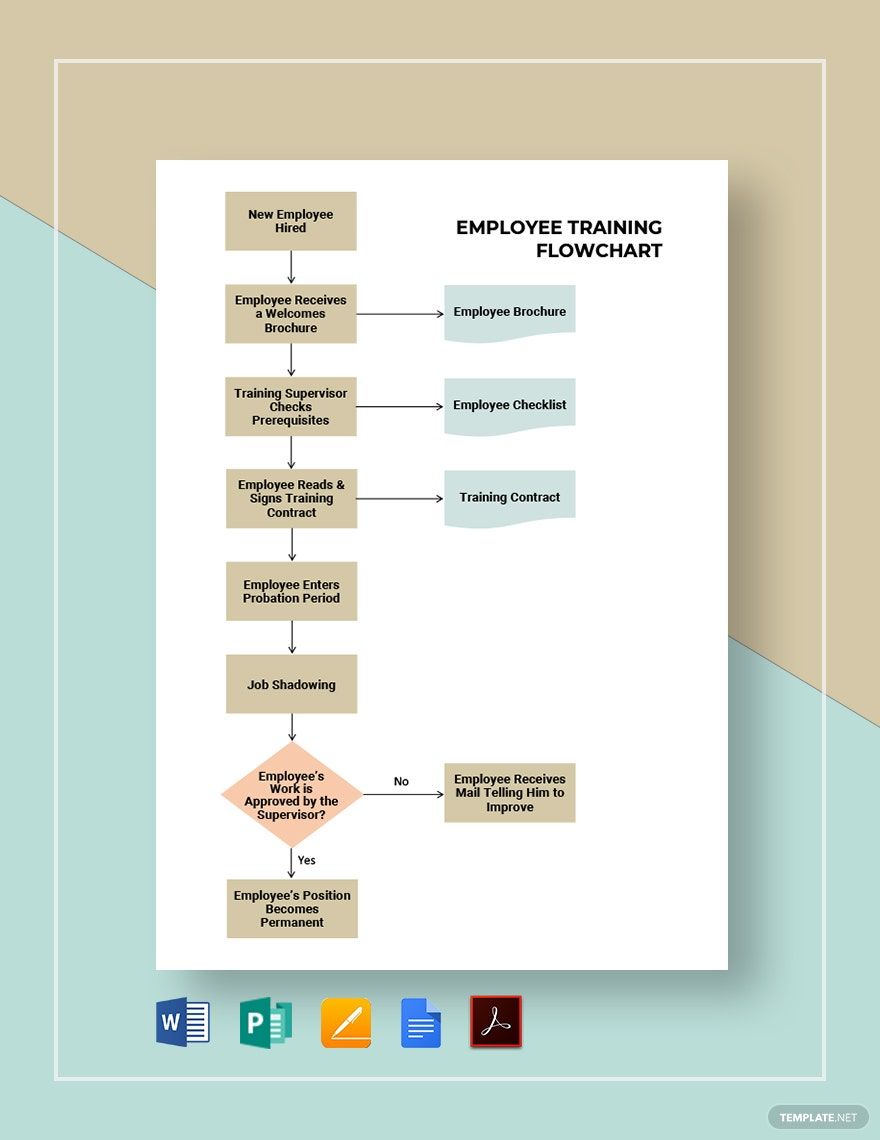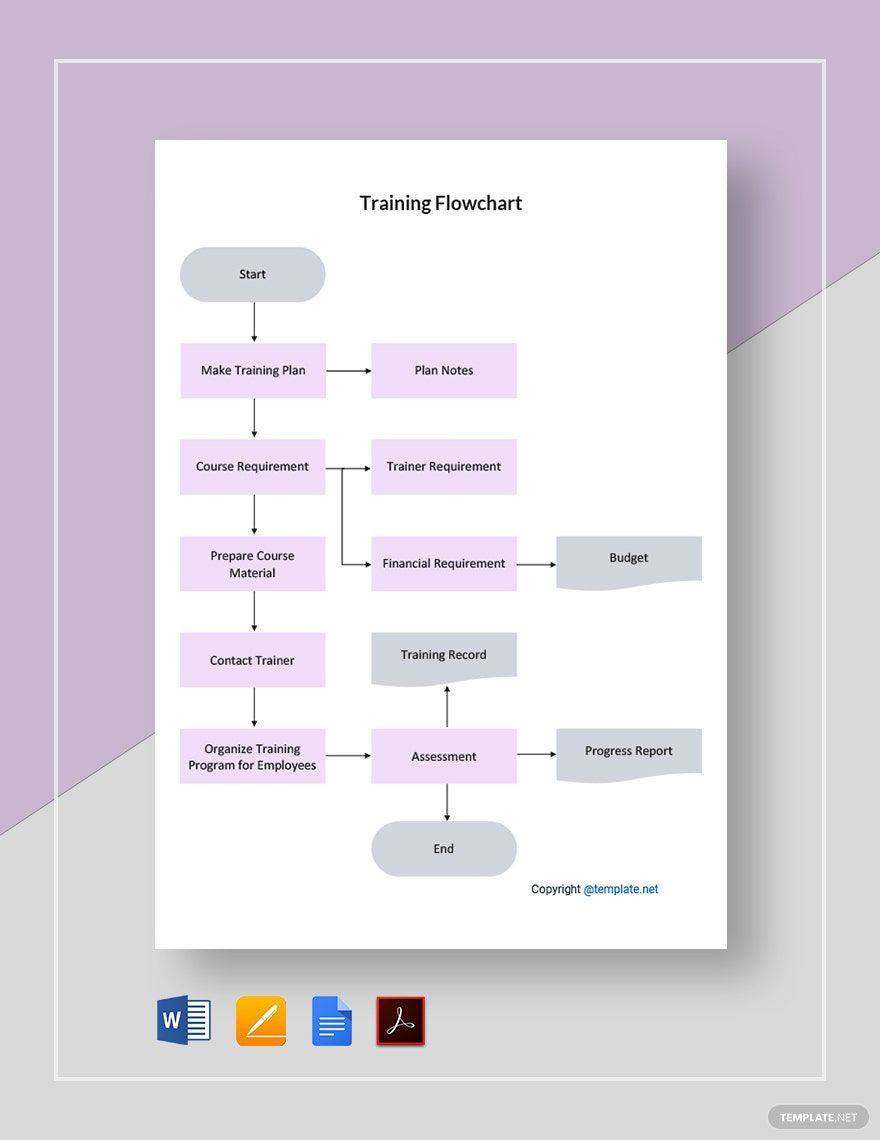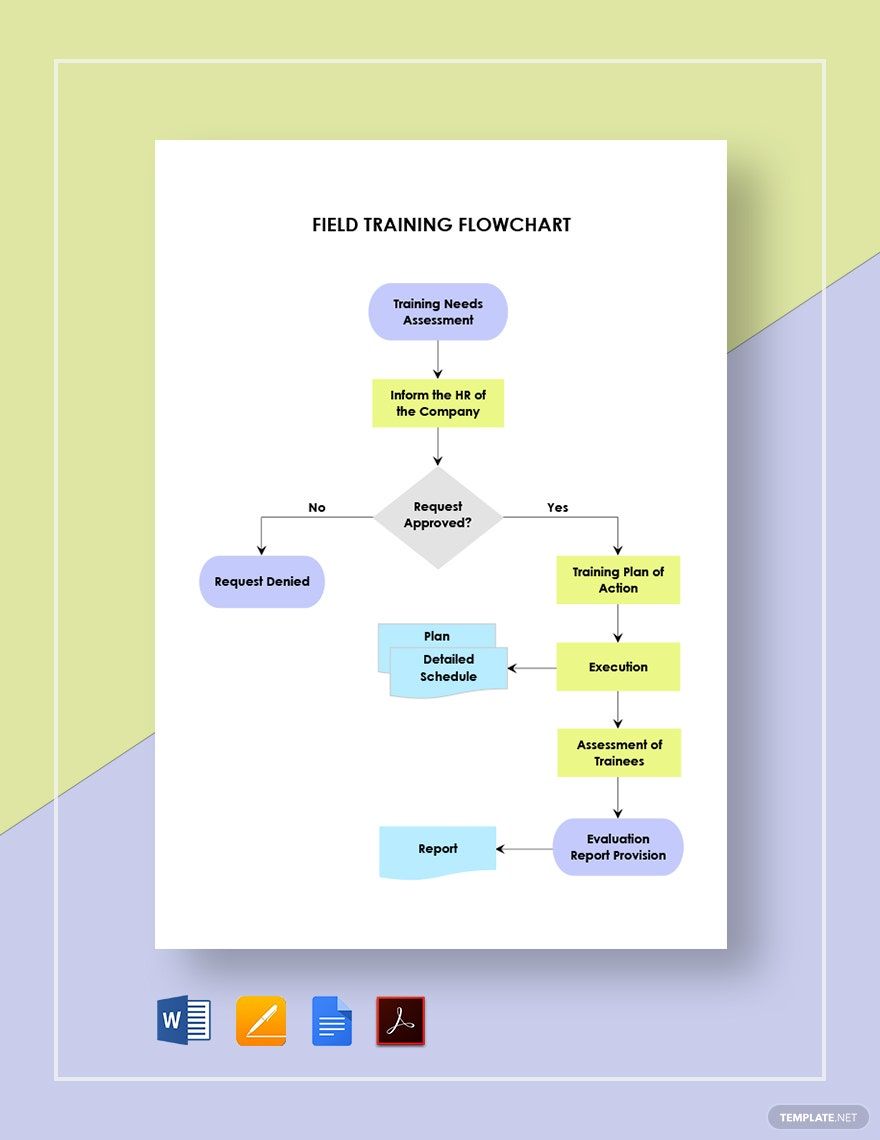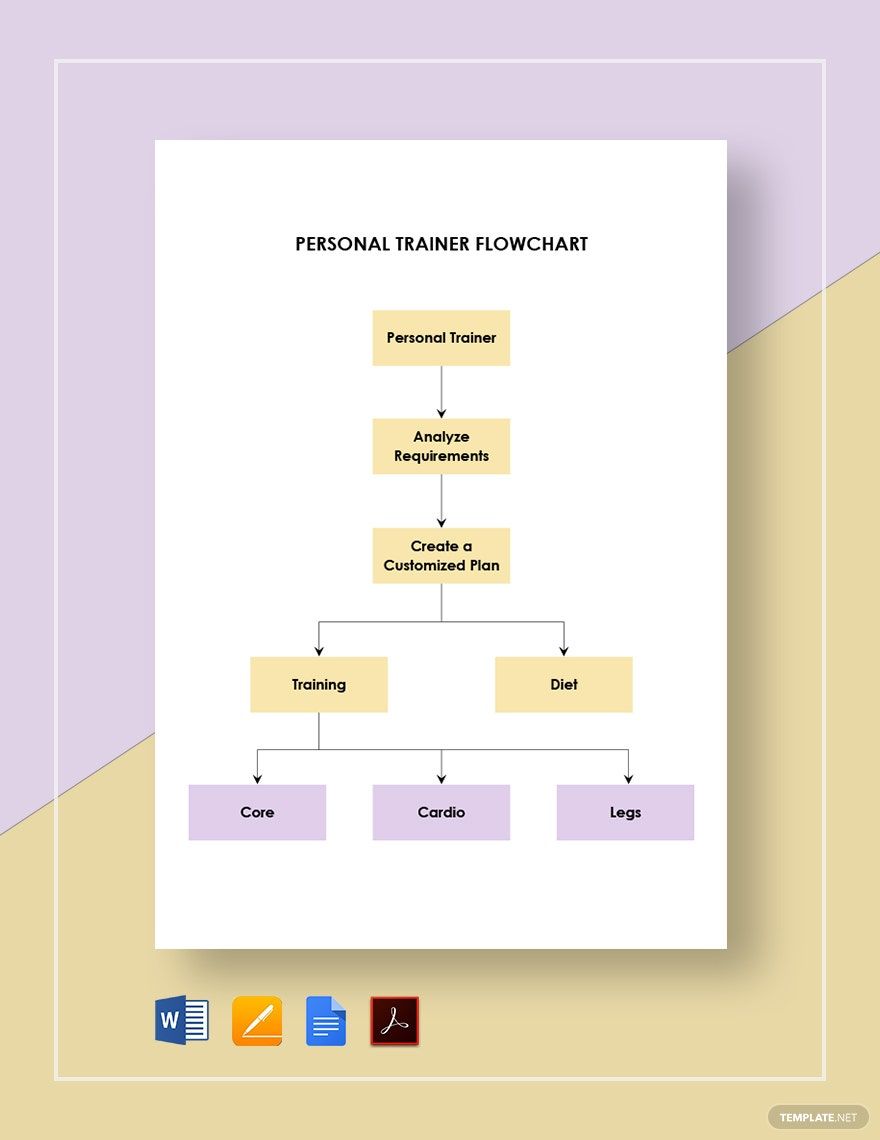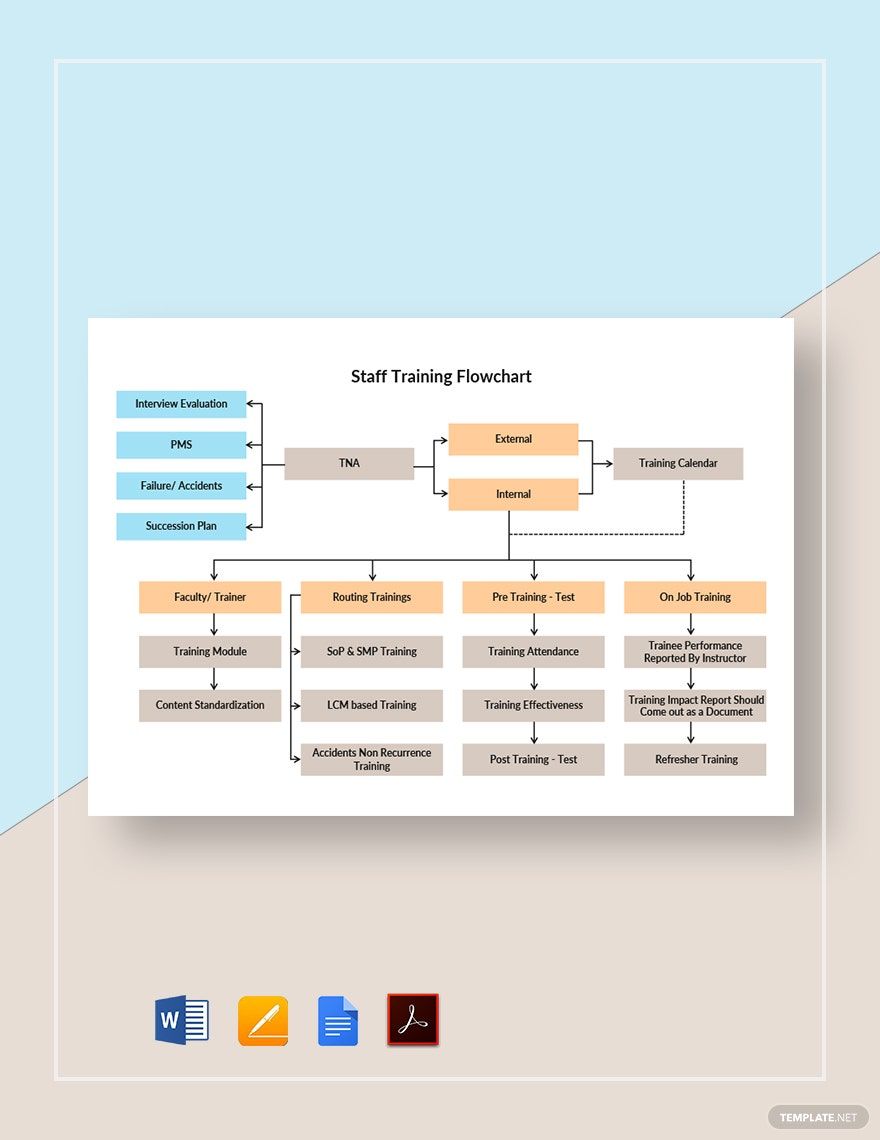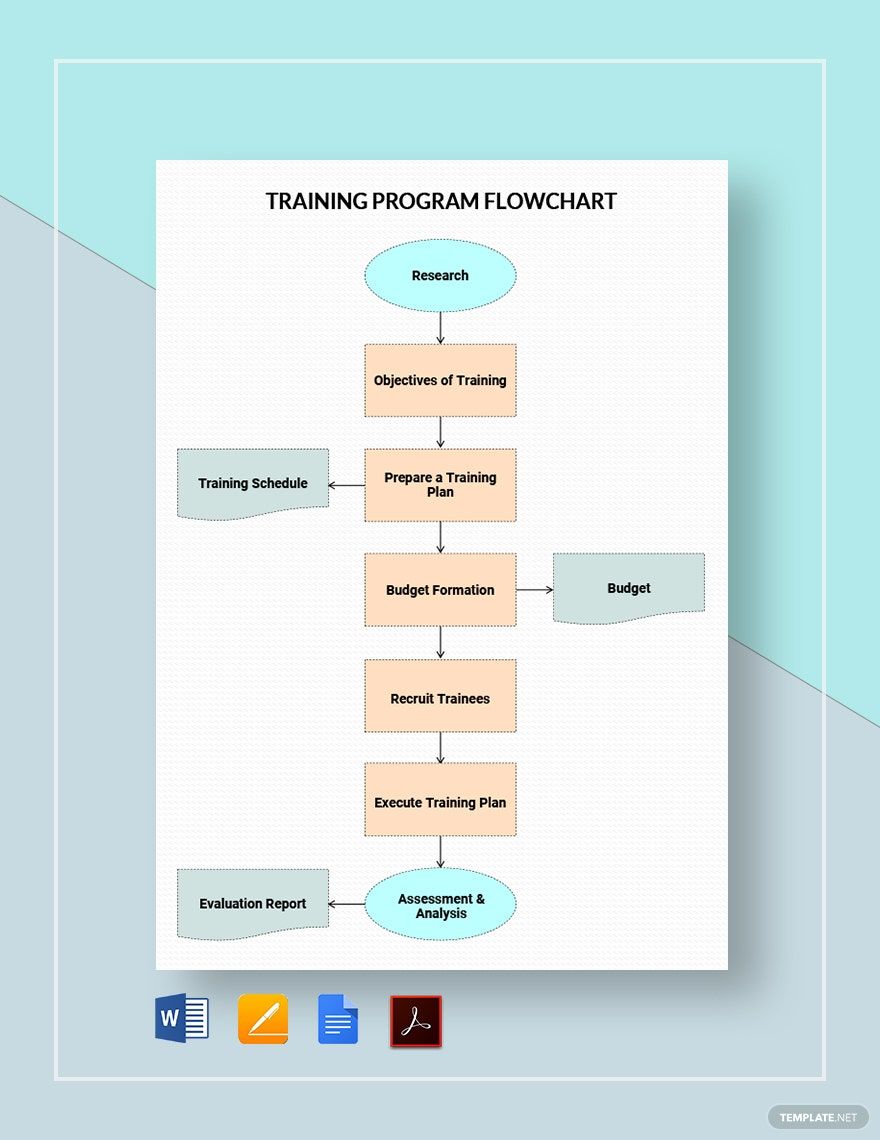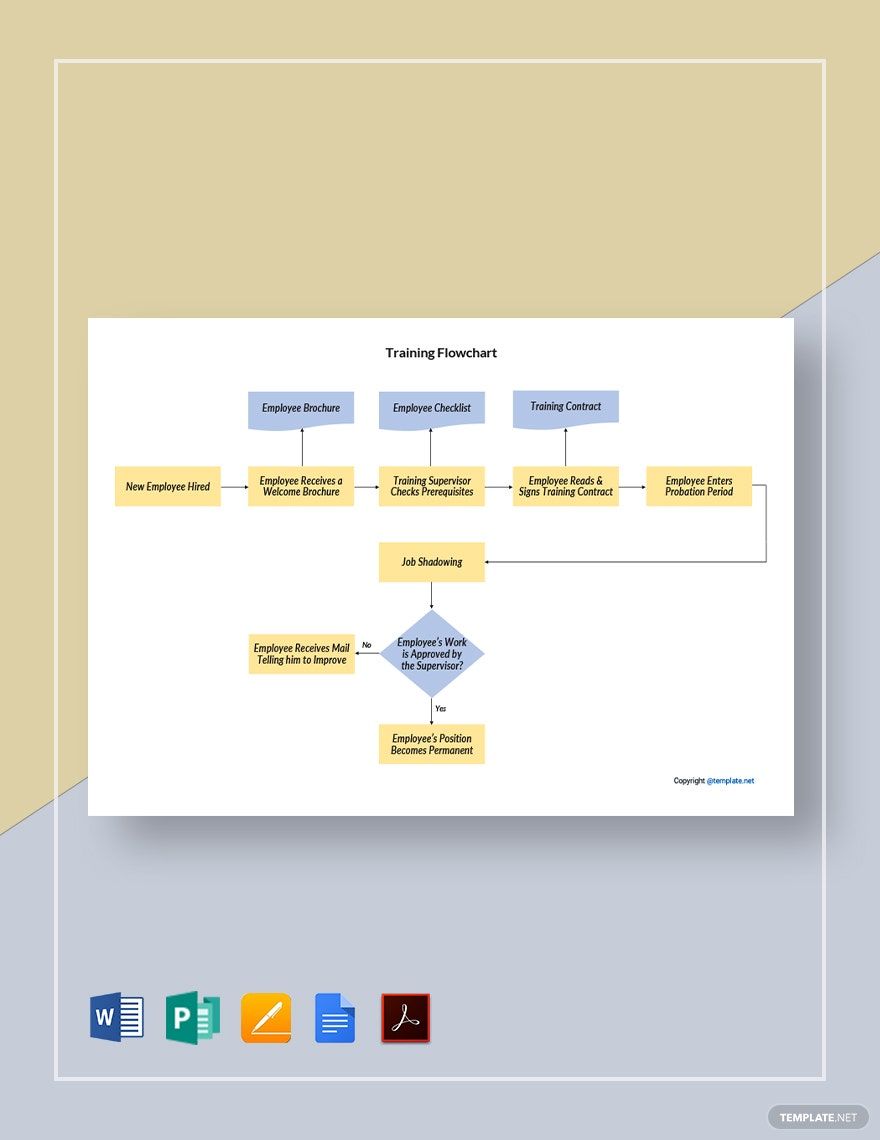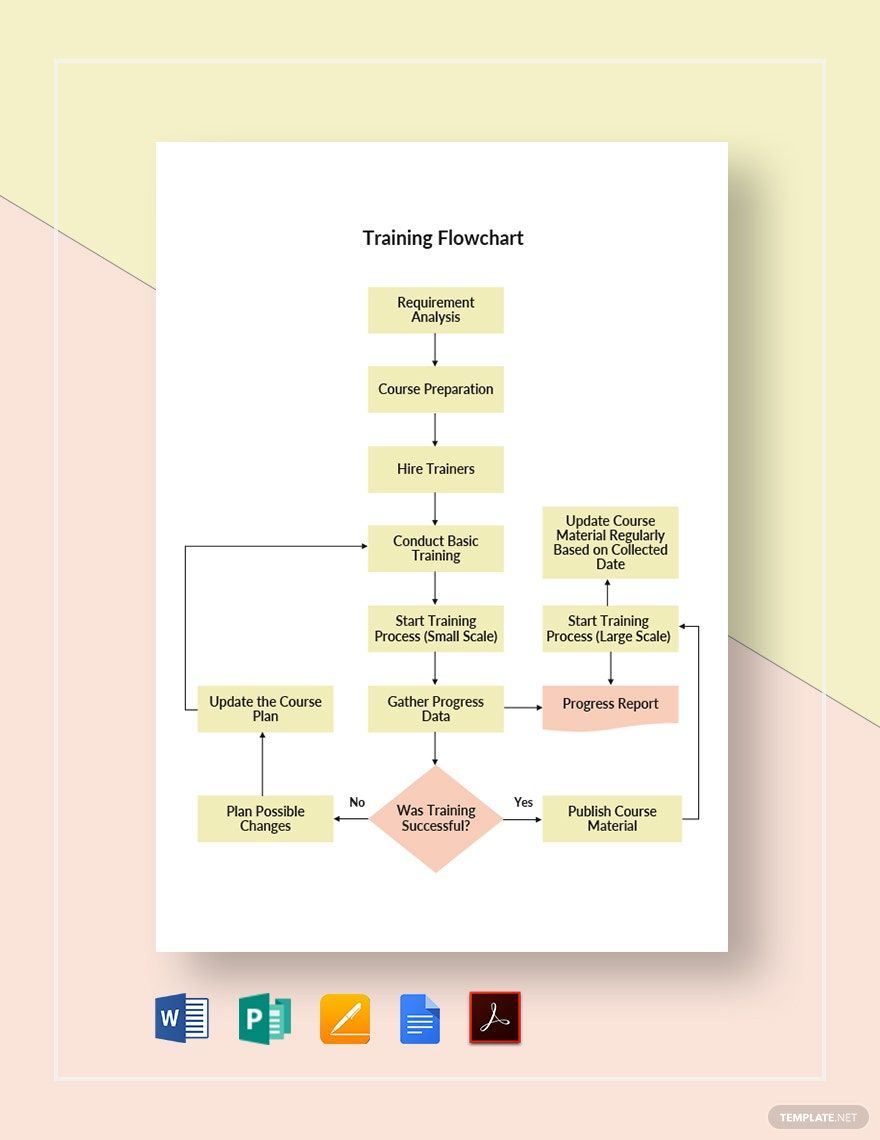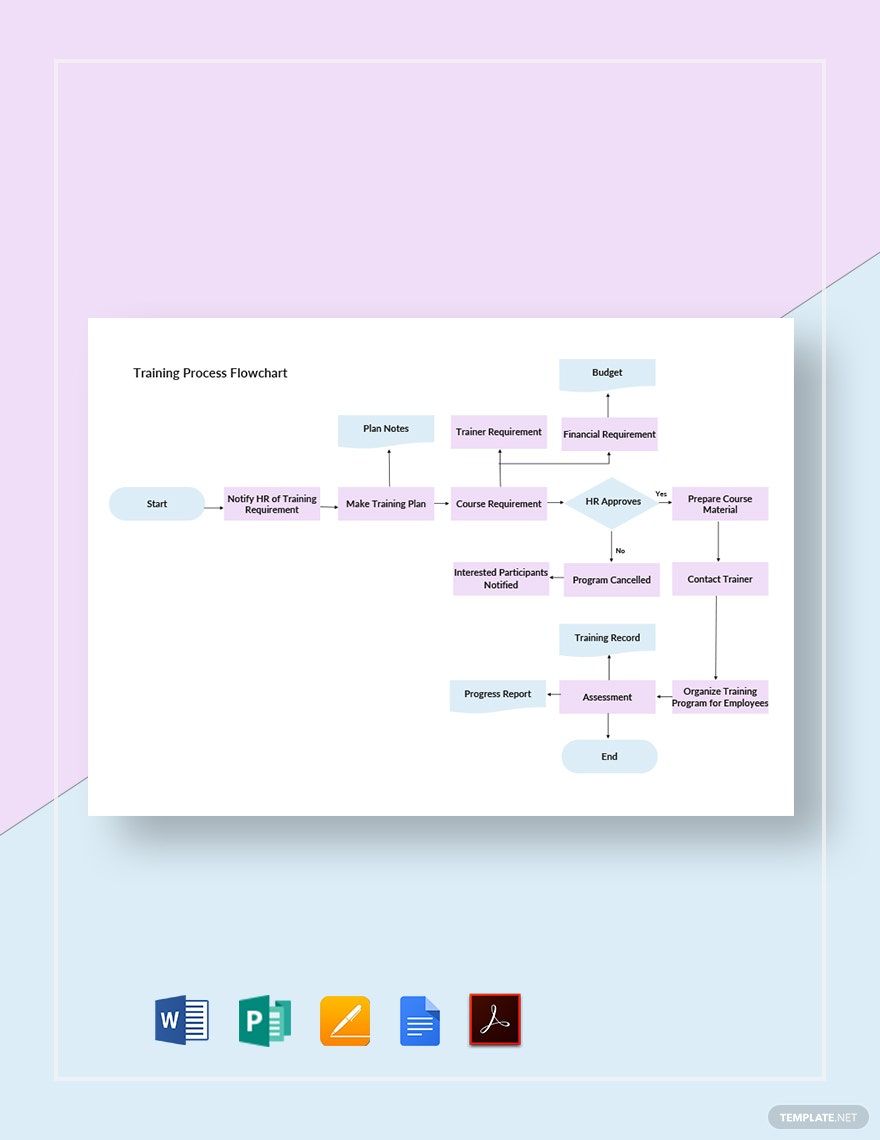Training is an essential process, be it in business or education. Having a training program that lays out the activities and metrics for a specific role ensures that you can achieve work uniformity and continuity. In this light, our Training Flowchart Templates will help ensure that you conduct an effective and efficient training flow for your employees, students, volunteers, etc. These templates are easily customizable, which guarantees you can provide training activities and exercises suitable for a specific purpose or role. Create a clear outline of your training processes with our templates today and achieve the best results tomorrow!
How to Create a Training Flowchart
According to Grovo, in every 1,000 employees, $13.5M are wasted every year due to ineffective training. As a business owner, high turnover due to inefficient training can cause a significant deficit to the company. Your human resources department or training department needs to develop an efficient strategy to provide practical training and development exercises to your personnel to achieve productivity targets and company goals.
You can find easy tips on how you can create a comprehensive training flowchart to guide your training and development program below.
1. Identify the Need or Purpose
You should conduct a needs assessment to determine the training needs of your employees, students, etc. Having a clear vision of the purpose or needs will help you efficiently pinpoint what activities to conduct. Furthermore, you can also set the objectives for each milestone if you have an idea of what you should achieve or address, i.e., the need or purpose.
2. Plot the Training Activities
Since you have already identified the training needs or purpose and set the training objectives, you can start plotting the training activities for your training program. Organize the exercises based on their assumed hierarchy of importance to create a seamless and strategic movement in your flowchart.
3. Assign the Training Provider
Each training activity must have a training provider that specializes in that specific area of expertise. The training provider can be from a third-party company or internally; you can assign team leaders, department heads, etc. to conduct the training so long as they have relevant experiences or knowledge on the tasks.
4. Review Results
After each training, it is essential to review the results to determine if you were able to meet the objectives you have set. Moreover, you can also study what you need to improve on the next training schedule or what other training exercises to include. You can also use the results as a basis for measuring the ROI on the training cost and expenses.
